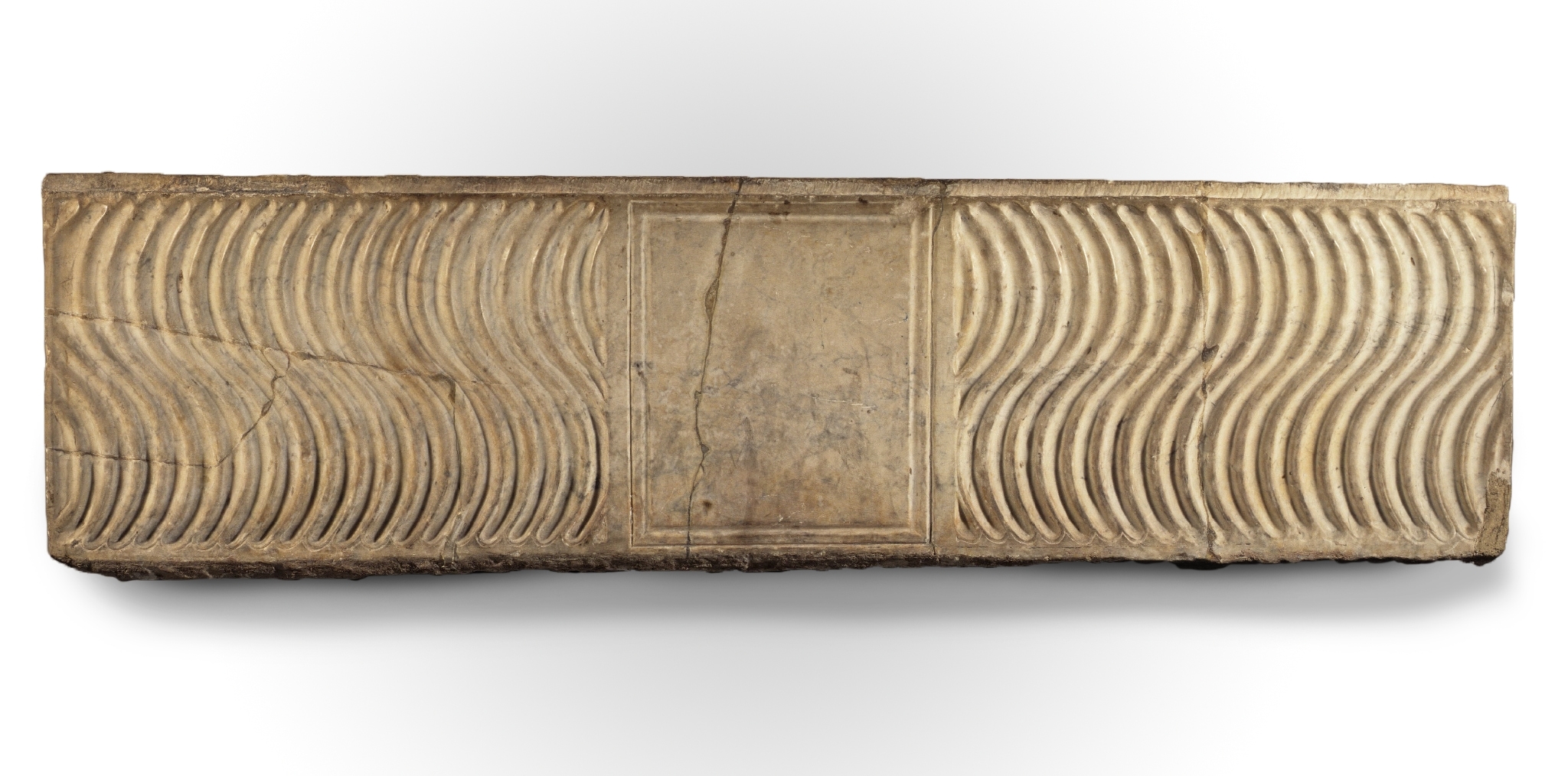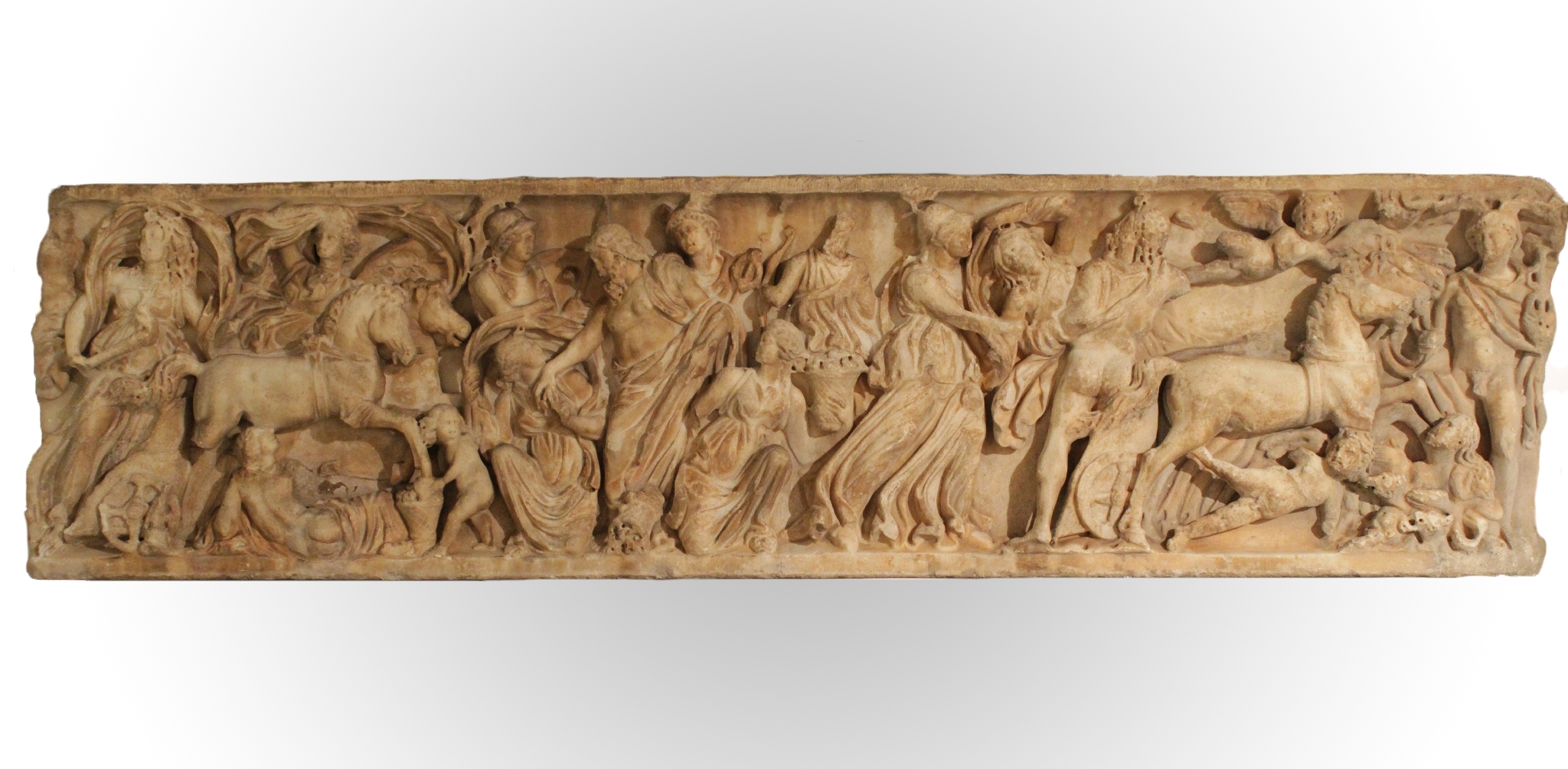- Object type
- sarcophagus
- Production date
- 200 / 400
- Fabric -
- Museum
- Museu de Badalona
- Culture
- Roman world
- Discovery location
- Ciutat romana de Baetulo. L'Estrella
- Materials
- stoneware
- Township
- Badalona (Europa, Espanya, Catalunya, Barcelona, Barcelonès)
- Technique
- sculpting
- Where is it?
- Exposició permanent
- Dimensions
- 45 x 50 x 14 cm






